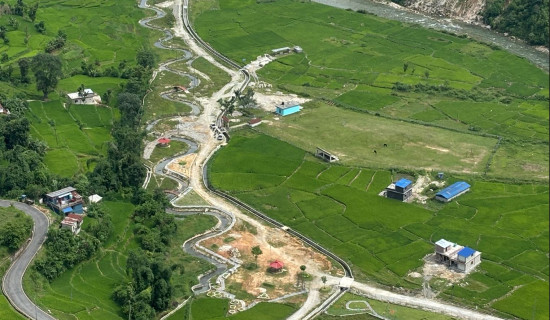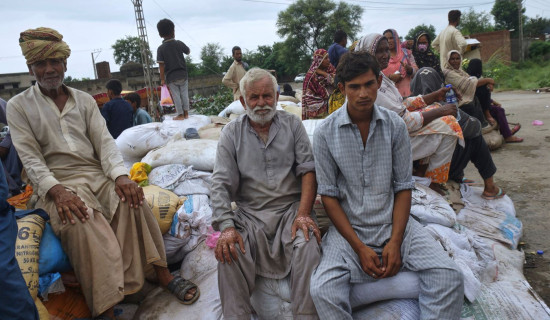- Tuesday, 2 September 2025
Youth Anxiety: Causes, Concerns, Cures
According to the World Health Organization, one in seven individuals aged between ten to nineteen years old experiences some form of mental disorder. Among such disorders, depression, behavioural disorders and anxiety are the most frequent forms of disorders that affect individuals of that age. It is evident that the present society, which is becoming increasingly complicated each day, is affecting the development of youth. Whether it be the technological developments and unrestricted access to the internet, unrealistic physical beauty standards, or high academic pressure and competitive academic system, today’s budding generation is suffering in a manner that has a drastic impact on them, their future and the future of the world itself.
A 2024 study by Fengsai Bie and his colleagues shows that anxiety disorders among youths have increased by a whopping 52 per cent during the years between 1990 and 2021. The timeframe used in the study is parallel to the leaps made in technology in recent years. From the introduction of smartphones in the first decade of the 21st century to the rapid development of AI technologies in the present day, today's youth have been exposed to a rate of change that has never been experienced before. Their attempts to adapt to this rate of development also affect their mental health.
Internet addiction
Not only the changes but also where the changes are applied affect the youth and their mental health. Youths want to be updated on the latest trends and internet phrases or “memes,” which leads them to create an online persona that is different from their real self. Over time, they end up spending so much time curating their internet self that they have trouble differentiating between their real self and their online persona. Furthermore, such an obsession can also lead to internet addiction, a type of disorder that has not been officially recognised as of yet in the Diagnostic and Statistical Manual of Mental Disorders, Fifth Edition (DSM-5), but has been acknowledged to be a significant issue by researchers all over the world.
Then there’s the issue of unrealistic beauty standards and physical comparisons. This has also been influenced by children’s unrestricted access to the internet. Celebrity culture and social media also play a huge role in the development of anxiety. Children are highly influenceable and are susceptible to believing anything that they see. And when their favourite celebrity is presenting an “ideal” body image which is impossible to achieve, then they desire to acquire that specific body type. This can lead them to skip meals and fast even when there is no need to do so. If the condition gets more serious, then it might even lead to the development of anxiety disorders such as eating disorders (bulimia nervosa or anorexia nervosa) and body dysmorphic disorder.
Likewise, academic pressure also leads to the development of anxiety in young children. In their 2023 study, researchers Hua Wang and Xiaoyan Fan found that academic stress leads to anxiety, which translates to poor sleep quality, affecting students mentally and tiring them physically at the same time. In the context of Nepal, where the only system of assessment available is the end of the academic written exams, it is evident that such issues exist. While research is lacking in the Nepali context, one only needs to pay attention when the news results of grades ten and twelve are out every year.
Educational system
Every year, some unpleasant event, such as suicide, can be heard due to a student achieving marks that they did not expect. No education system should push its students to such measures. While students have the responsibility of properly studying their course content, it is the failure of the country that has such an educational system, which sucks the hopes of students and causes them to take life-threatening actions. An urgent educational reform is needed in Nepal, not just to protect the youth but also to stop the brain drain and to protect the future of the country itself.
Both preventive and curative practices should be made available to youths in order to combat the rise in youth anxiety and mental health disorders. Efforts should be made from the policy level itself and should be implemented from the grassroots to make sure that no youth is left to suffer. Preventive measures can range from the inclusion of psychosocial education about internet use to course contents, short non-credit courses about bullying, body image positivity, to the enforcement of age restrictions on apps and sites that are known to promote content that is harmful to the youth.
While attempts to combat the unregulated social media use by youths have been made by the Nepali government, it has not been enough and has not resulted in any significant change. Similarly, curative practices can include the provision of specialised counselling and medicines for anxiety disorders that are most prevalent among the youth age group.
(Chaulagain is a psychology student at St. Xavier's College, Maitighar.)















